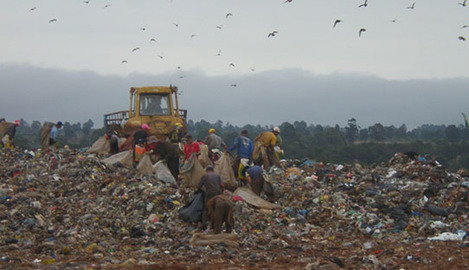In the modern discourse on waste management, the juxtaposition of incineration and landfill utilization stands as a compelling nexus of environmental scrutiny and technological aspiration. As humanity grapples with an insatiable appetite for consumption, the aftermath—waste—elicits a critical examination of its containment and treatment. This exploration seeks to unveil whether the fiery embrace of incinerators is, in fact, more environmentally sustainable than the persistent entombment of waste in landfills.
In the grand theater of waste management, landfills emerge as the steadfast giants, vast repositories where detritus accumulates over years, often decades. Visualize these sprawling mounds of refuse as mountains, silently growing, their peaks veiled in an ever-thickening shroud of biohazard. Each layer of refuse is akin to a geological stratum, encapsulating the vestiges of our collective consumerism. This immobile storage, while ostensibly straightforward, conjures a veritable Pandora’s box of environmental ramifications. Leachate, the toxic brew that percolates through layers of refuse, becomes a potent threat to groundwater—a vital resource—while methane, a greenhouse gas exponentially more formidable than carbon dioxide, bides its time, escaping into the atmosphere and contributing to the inexorable march of climate change.
In stark contrast, incinerators are the pyromancers of waste management, burning refuse at high temperatures, reducing it to ash, gas, and heat. This alchemical transformation ostensibly offers an alluring appeal: a significantly reduced volume of waste, often up to 90% less, recycled heat for energy generation, and a diminished footprint on terrestrial ecosystems. However, this blazingly efficient process is not devoid of detractors, as it engenders its own set of environmental challenges. The emission of dioxins, heavy metals, and particulate matter raises alarms about air quality and public health, casting a pall over the perceived benefits of incineration.
When examining the environmental impacts, spatial considerations play a pivotal role. Landfills, while expansive, require extensive land use and can lead to long-term degradation of the surrounding ecosystem. The area they occupy may remain inert for centuries, hindering any possibility of reclaimed land or ecological restoration. Conversely, incinerators, through their energetic transformation of waste, demand considerably less land. This condensed waste footprint invites a reevaluation of land use and urban planning—prioritizing green spaces and biodiversity over waste management.
However, both systems grapple with the concept of sustainability. On the one hand, landfills, often criticized for their inevitability, reflect a linear economy that privileges consumerism—dispose and replenish. They embody an archaic philosophy of waste management, offering little scope for recovery or reuse. On the other hand, incineration can align with the principles of a circular economy—transforming waste into energy, thus heralding a potential bioprogressive paradigm shift. Nevertheless, this notion hinges upon which types of waste are processed; organic, recyclable, and hazardous materials require separate consideration and should be diverted from incinerators to optimize their respective recycling processes.
A critical aspect of the discourse hinges on technological advancements. Modern incineration technologies, equipped with sophisticated filtration and scrubbing systems, diminish the emission of noxious substances, making them more palatable alternatives. Indeed, the quest for clean incineration culminates in a scenario that mirrors the evolution of energy sources—transitioning from carbon-heavy fossil fuels to cleaner, alternative energies. This analogy posits that, while the combustion of waste carries inherent risks, advancements can pave pathways to greener solutions.
A growing movement emphasizes the importance of waste management hierarchy—the “reduce, reuse, recycle” ethos that prioritizes waste minimization over landfilling or incineration. In this hierarchical construct, both incinerators and landfills are relegated to a last resort, with an emphasis on behavioral change and systemic reformation in production and consumption patterns. Such an approach underscores that the most effective environmental strategy may not lie in choosing between incinerators and landfills but rather in integrating diverse waste management strategies with a holistic framework of sustainability.
Ultimately, the question of whether incinerators are more environmentally friendly than landfills elicits not only a technical evaluation but sociopolitical considerations. Community perceptions, socio-economic implications, and regulatory frameworks shape the acceptance and implementation of waste management strategies. Civic engagement, transparency, and comprehensive environmental assessments must inform any decisions moving forward. In a way, our choice may reflect a darker allegory, where the management of waste mirrors wider societal values and priorities.
In conclusion, the dichotomy of landfills and incinerators illustrates the complexities of environmental stewardship. While incinerators present a potentially more efficient and space-conserving alternative, the overarching ramifications of emissions and unsustainable practices demand rigorous scrutiny. Conversely, landfills persist as a classical yet cumbersome solution fraught with long-term implications. As society strives towards sustainable waste management, the amalgamation of both strategies, refined through technological advancements and enhanced by community engagement, may unveil the path toward a cleaner, more conscientious future. The decision, like the refuse we generate, remains a reflection of our collective choices and commitments to the environment.










